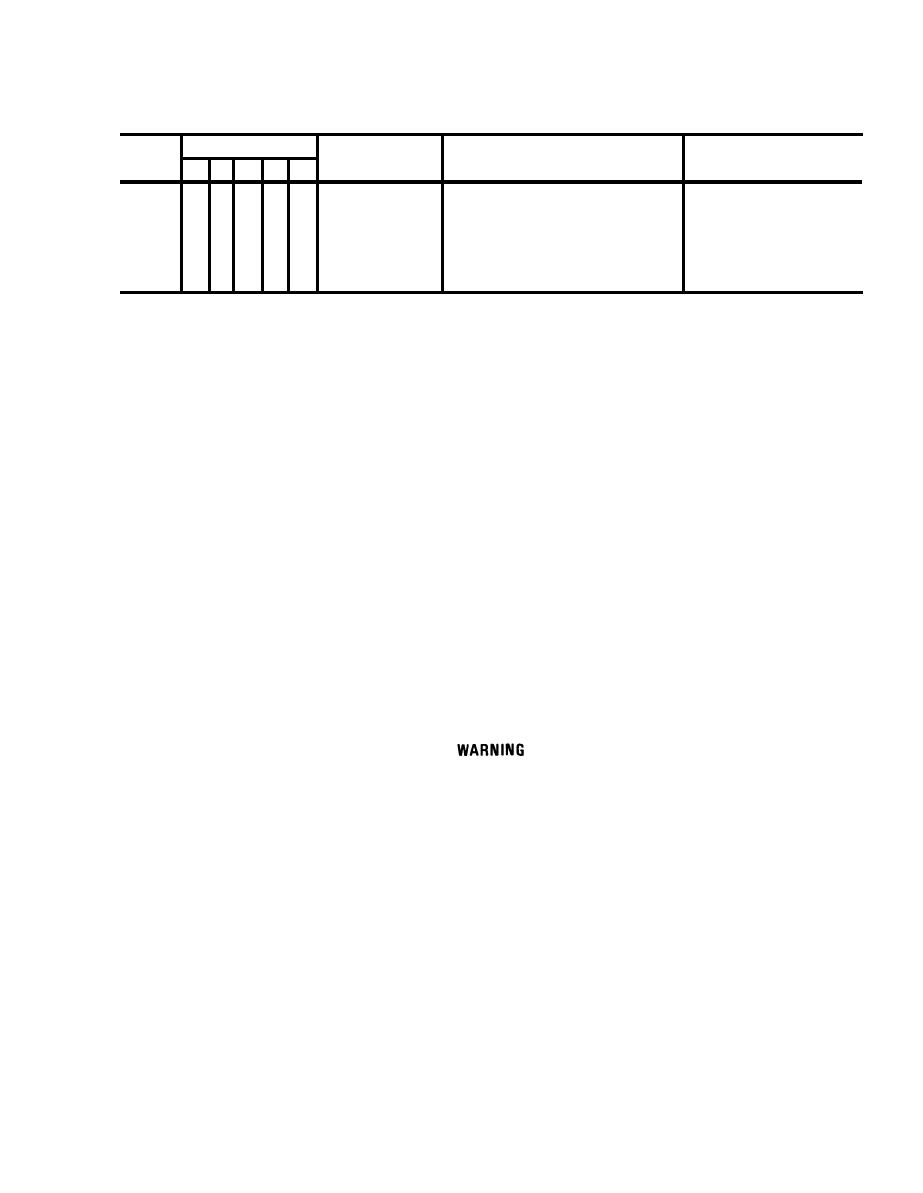
TM 5-4310-375-14
Table 2-1. Operator/Crew Preventive Maintenance Checks and Services - Continued
EQUIPMENT IS NOT
ITEM TO BE
INTERVAL
ITEM
R E A D Y / A V A I L A B L E IF:
PROCEDURE
INSPECTED
DA
W
M
B
NO.
Clean unit using solvent, Fed Spec
P-D-680, or equivalent, to remove
oil and dirt from the compressor
and dry thoroughly.
Note:
Leakage definitions for operator/crew PMCS are as follows:
Seepage of fluid (as indicated by wetness or discoloration) not great enough to form drops.
Class I -
Leakage of fluid great enough to form drops but not enough to cause drops to drip from item being
Class II -
checked/inspected.
Leakage of fluid great enough to form drops that fall from the item being checked/inspected.
Class III-
CAUTION
Equipment operation is allowable with minor leakages (Class I or II).
Of course, you must consider the fluid capacity in the item/system
being checked/inspected. When in doubt, notify your supervisor.
When operating with Class I or Class II leaks, continue to check
fluid levels as required in your PMCS. Class III leaks should be
reported to your supervisor or Organizational Maintenance.
Section III. OPERATION UNDER USUAL CONDITIONS
2-5.
Assembly and preparation for use. The air compressor is shipped as a completely assembled unit. Openings
for forklift tines are provided for lifting unit from transporting equipment.
The forklift, or other lifting device, used for unloading or movement must
be capable of lifting a minimum of 1000 pounds (454 kgs).
a. Unloading. The unit can be unloaded from transporting carrier by using a lifting device or picked up with
a forklift. If lifting device is used, attach lifting cables under receiver tank and use spreader bars as necessary to
prevent unit from turning when lifted.
CAUTION
Do not lift unit by attaching cables to air compressor, motor, or belt guard
to prevent component damage.
(1) Remove all blocking and tie downs securing unit to carrier.
(2) Lift unit from carrier and transport to installation sight.
2-7

